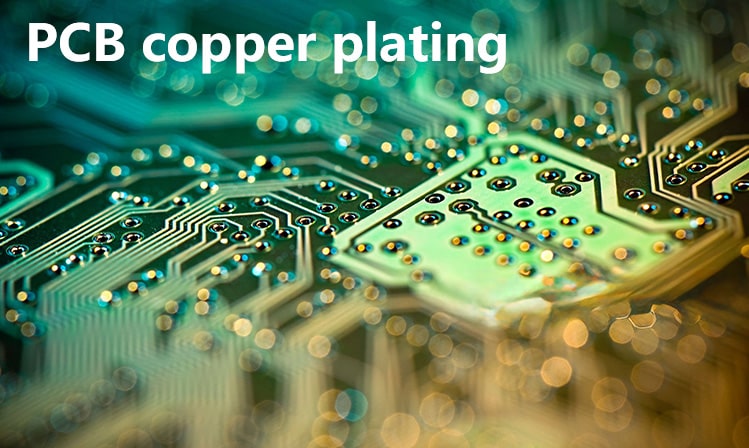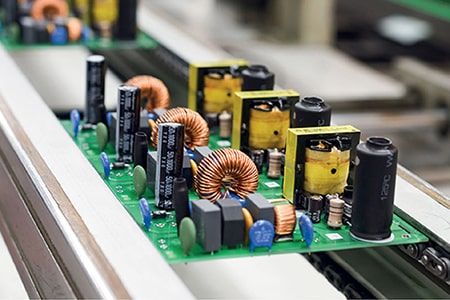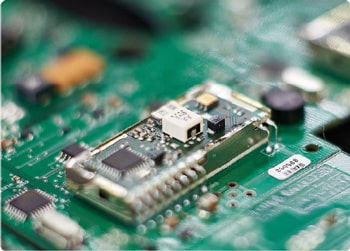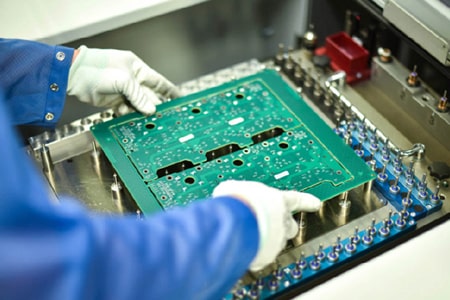What are the roles of copper plating in PCB design?
The role of copper plating in PCB design and its precautions
After completing all the contents of PCB design, the last key step - copper plating is usually carried out. Copper plating is to cover the idle space on the PCB with copper surface. Usually, the area where copper plating is completed will turn red, indicating that this part of the area is covered with copper. So, why do we need copper plating?
In fact, copper plating has many positive effects on the performance and reliability of PCB, such as reducing ground impedance, improving anti-interference ability, and helping heat dissipation.

The role of copper plating in PCB design and its precautions
1. Reduce ground impedance
Reducing ground impedance
There are a lot of spike pulse currents in digital circuits, so it is particularly necessary to reduce ground impedance. Copper plating is a common method to reduce ground impedance. By increasing the conductive cross-sectional area of the ground wire, the resistance of the ground wire can be reduced; by shortening the length of the ground wire, the inductance of the ground wire can be reduced, thereby reducing the impedance of the ground wire; the capacitance of the ground wire can also be controlled to increase it appropriately, thereby improving the conductive performance of the ground wire and further reducing the impedance of the ground wire.
2. Shielding protection and noise suppression
Large-area copper plating of ground or power supply can play a shielding role, reduce electromagnetic interference, improve the anti-interference ability of the circuit, and meet the requirements of EMC. For high-frequency circuits, copper plating can also provide a complete return path for high-frequency digital signals, reduce the wiring of DC networks, and thus improve the stability and reliability of signal transmission.
3. Improve heat dissipation
In addition to reducing ground impedance, copper plating can also be used for heat dissipation. Metal is a material that is easy to conduct electricity and heat. Therefore, plating copper on PCB can increase the metal content of the board and increase the heat dissipation surface area, which helps the overall heat dissipation of the PCB board.
4. Evenly distribute heat
Copper plating can help evenly distribute heat and prevent the generation of local high-temperature areas. By evenly distributing heat to the entire PCB board, local heat concentration can be reduced, the temperature gradient of the heat source can be reduced, and the heat dissipation efficiency can be improved.
Specific methods
- Design heat dissipation area: According to the distribution of heat sources on the PCB board, reasonably design the heat dissipation area, and lay enough copper foil in these areas to increase the heat dissipation surface area and heat conduction path.
- Increase the thickness of copper foil: Increasing the thickness of copper foil in the heat dissipation area can increase the heat conduction path and improve the heat dissipation efficiency.
- Design heat dissipation through holes: Design heat dissipation through holes in the heat dissipation area to conduct heat to the other side of the PCB through the through holes, increase the heat dissipation path and improve the heat dissipation efficiency.
- Add heat sinks: Add heat sinks in the heat dissipation area to conduct heat to the heat sink, and then dissipate heat through natural convection or fan radiators to improve heat dissipation efficiency.
5. Reduce deformation and improve manufacturing quality
Copper plating can help ensure the uniformity of electroplating and reduce the deformation of the board during the lamination process, especially for double-sided or multi-layer PCBs, to improve the manufacturing quality of PCBs. If there is too much copper foil in some areas and too little in some areas, the entire board will be unevenly distributed. Copper plating can effectively reduce this gap.
6. Meet the installation requirements of special devices
For some special devices, such as those that require grounding or special installation requirements, copper plating can provide additional connection points and fixed support to enhance the stability and reliability of the device.
Applicable scenarios and limitations
Although copper plating has many advantages, it may not be suitable or feasible in some cases.
1. High-frequency signal lines
For high-frequency signal lines, copper plating may introduce additional capacitance and inductance, affecting the transmission performance of the signal. In high-frequency circuits, it is usually necessary to control the routing of the ground wire and reduce the return path of the ground wire, rather than over-plating copper.
2. High-density circuit boards
For high-density circuit boards, excessive copper plating may cause short circuits or grounding problems between lines, affecting the normal operation of the circuit. When designing high-density circuit boards, it is necessary to carefully design the copper plating structure to ensure that there is sufficient spacing and insulation between the lines to avoid problems.
3. Difficult welding
If the pins of the components are fully covered with copper plating, it may cause excessive heat dissipation, making desoldering and rework difficult. Copper has a high thermal conductivity, so the copper surface will quickly conduct heat during welding, affecting the control of the welding temperature. In terms of design, a "cross pad" can be used to reduce heat dissipation and facilitate welding.
4. Special environmental requirements
In some special environments, such as high temperature, high humidity, corrosive environment, etc., copper foil may be damaged or corroded, thus affecting the performance and reliability of the PCB board. In this case, it is necessary to select appropriate materials and treatment methods according to the specific environmental requirements, rather than over-plating copper.
5. Special layer boards
For special layer boards such as flexible circuit boards and rigid-flexible boards, copper plating design needs to be carried out according to specific requirements and design specifications to avoid problems with the flexible layer or rigid-flexible layer caused by excessive copper plating.
Copper plating plays an important role in PCB design, with multiple advantages such as reducing ground line impedance, improving heat dissipation capacity, reducing deformation, and meeting special device installation requirements. In specific cases such as high-frequency signal lines, high-density circuit boards, and special environments, the copper plating structure should be carefully designed to avoid potential problems. Through reasonable copper plating design, the overall performance and manufacturing quality of the PCB can be significantly improved.







